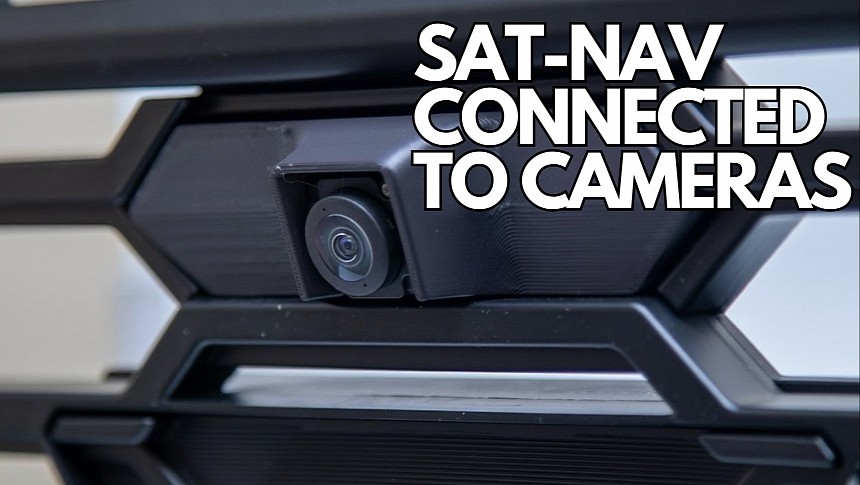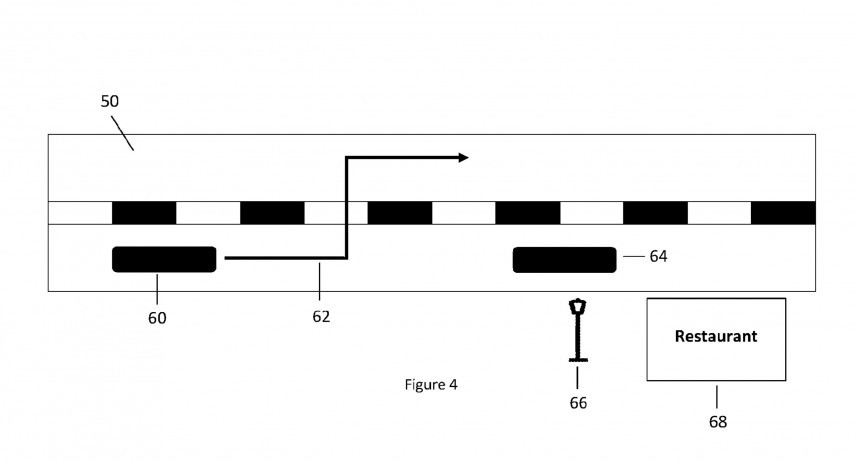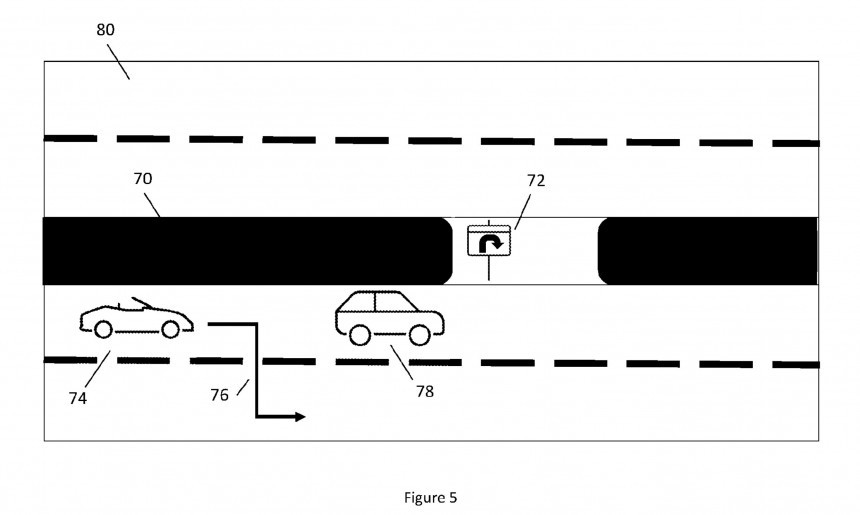Navigation apps, be they Google Maps, Apple Maps, Waze, or any other alternative, use GPS to determine where you are and follow you on the map as you drive to the destination.
A GPS connection provides decent accuracy – the typical smartphone (not including premium devices with dual-GPS support) provides an accuracy of up to 5 meters, so the navigation app should correctly determine your location even in complex intersections.
However, the GPS connection is not flawless. If you've been using a navigation app for more than one occasion, you probably know there are times when it doesn't correctly determine which side of the road you are. The shortcoming leads to other problems, such as the navigation app offering incorrect directions to the destination.
More often than not, I encountered such problems in Waze. A two-way road raises particular challenges to navigation apps, as they can't tell precisely on which side you are and what direction the car is facing. It typically happens when you just launched the application, so it must look for directions from scratch without knowing how you reached the location.
Because it doesn't know what direction you're facing, the navigation app can offer incorrect directions, such as a different route that adds up to several minutes to the ETA.
HERE, the company whose navigation software is among the leaders in this space, has come up with a solution for this problem as part of a technology whose role is to determine a vehicle's change of direction.
HERE explains in a recent patent filing that navigation software should be able to tell which way you're going with the help of the hardware already installed on the vehicle. The patent is straightforwardly called "method and apparatus for determining vehicle change of direction," explaining that data supplied by vehicle sensors and cameras could help provide valuable data for this purpose.
The easiest way to understand how HERE's technology works is to imagine how a navigation app works in conjunction with the cameras installed on the vehicle. The system can request image data from the onboard cameras if the navigation software can't tell where you are and which direction you're facing.
The camera can take an image and forward it to the system for further analysis. The analysis relies on identifying the other vehicles on the road, looking for essential data that helps determine their direction of travel. For example, the system looks for vehicle elements, such as taillights and headlights. Using this data, the technology can determine what way you're facing and then provide accurate directions.
The system can be further enhanced with additional capabilities and also scan the road for road signs that could help determine your direction. Additionally, it can use other data, such as your previous navigation directions, to figure out where you are and where you're heading.
The approach sounds complex but is based on a simple approach. Once it receives essential information about your location, the application can look for routes from the determined spot, with the right directions offered from the beginning.
The easiest way to do this is to keep track of all your navigation sessions. If the sat-nav always provides navigation guidance, it can easily tell where you are and the direction you are facing. The system can analyze the previous directions, see what route you used and how you traveled, and then determine the location.
HERE explains that determining the vehicle change of direction can be used for autonomous vehicles, but it also comes in handy for regular cars with manual control. The same data can also be used for improving the map data and refining the navigation engine, eventually providing drivers with improved route guidance in accordance with their location.
HERE's proposal is based on the idea that vehicles are getting smarter, and the sat-nav software installed on the car can communicate with the hardware available onboard. The camera system is integral to the system, and HERE explains that any type of camera that can capture an image and send it for analysis could help power the technology.
As always, it's important to keep in mind that HERE's proposal is still in the patent stage, so it's too early to tell if the company is working on a mass-produced version. Companies sometimes patent new technology to protect their ideas just in case, so some of the concepts end up unused because they don't make sense in the real world.
HERE is pushing hard for technology to power autonomous vehicles, especially as its software is already used for mapping services in millions of cars on the road. Time will tell if this technology will also receive the go-ahead, but if you're interested in how it works, you can consult the PDF in the box after the jump, where HERE describes all the ways the system can determine a vehicle's change of direction and why it would be used for navigation software.
However, the GPS connection is not flawless. If you've been using a navigation app for more than one occasion, you probably know there are times when it doesn't correctly determine which side of the road you are. The shortcoming leads to other problems, such as the navigation app offering incorrect directions to the destination.
More often than not, I encountered such problems in Waze. A two-way road raises particular challenges to navigation apps, as they can't tell precisely on which side you are and what direction the car is facing. It typically happens when you just launched the application, so it must look for directions from scratch without knowing how you reached the location.
Because it doesn't know what direction you're facing, the navigation app can offer incorrect directions, such as a different route that adds up to several minutes to the ETA.
HERE explains in a recent patent filing that navigation software should be able to tell which way you're going with the help of the hardware already installed on the vehicle. The patent is straightforwardly called "method and apparatus for determining vehicle change of direction," explaining that data supplied by vehicle sensors and cameras could help provide valuable data for this purpose.
The easiest way to understand how HERE's technology works is to imagine how a navigation app works in conjunction with the cameras installed on the vehicle. The system can request image data from the onboard cameras if the navigation software can't tell where you are and which direction you're facing.
The camera can take an image and forward it to the system for further analysis. The analysis relies on identifying the other vehicles on the road, looking for essential data that helps determine their direction of travel. For example, the system looks for vehicle elements, such as taillights and headlights. Using this data, the technology can determine what way you're facing and then provide accurate directions.
The system can be further enhanced with additional capabilities and also scan the road for road signs that could help determine your direction. Additionally, it can use other data, such as your previous navigation directions, to figure out where you are and where you're heading.
The easiest way to do this is to keep track of all your navigation sessions. If the sat-nav always provides navigation guidance, it can easily tell where you are and the direction you are facing. The system can analyze the previous directions, see what route you used and how you traveled, and then determine the location.
HERE explains that determining the vehicle change of direction can be used for autonomous vehicles, but it also comes in handy for regular cars with manual control. The same data can also be used for improving the map data and refining the navigation engine, eventually providing drivers with improved route guidance in accordance with their location.
HERE's proposal is based on the idea that vehicles are getting smarter, and the sat-nav software installed on the car can communicate with the hardware available onboard. The camera system is integral to the system, and HERE explains that any type of camera that can capture an image and send it for analysis could help power the technology.
As always, it's important to keep in mind that HERE's proposal is still in the patent stage, so it's too early to tell if the company is working on a mass-produced version. Companies sometimes patent new technology to protect their ideas just in case, so some of the concepts end up unused because they don't make sense in the real world.
HERE is pushing hard for technology to power autonomous vehicles, especially as its software is already used for mapping services in millions of cars on the road. Time will tell if this technology will also receive the go-ahead, but if you're interested in how it works, you can consult the PDF in the box after the jump, where HERE describes all the ways the system can determine a vehicle's change of direction and why it would be used for navigation software.










